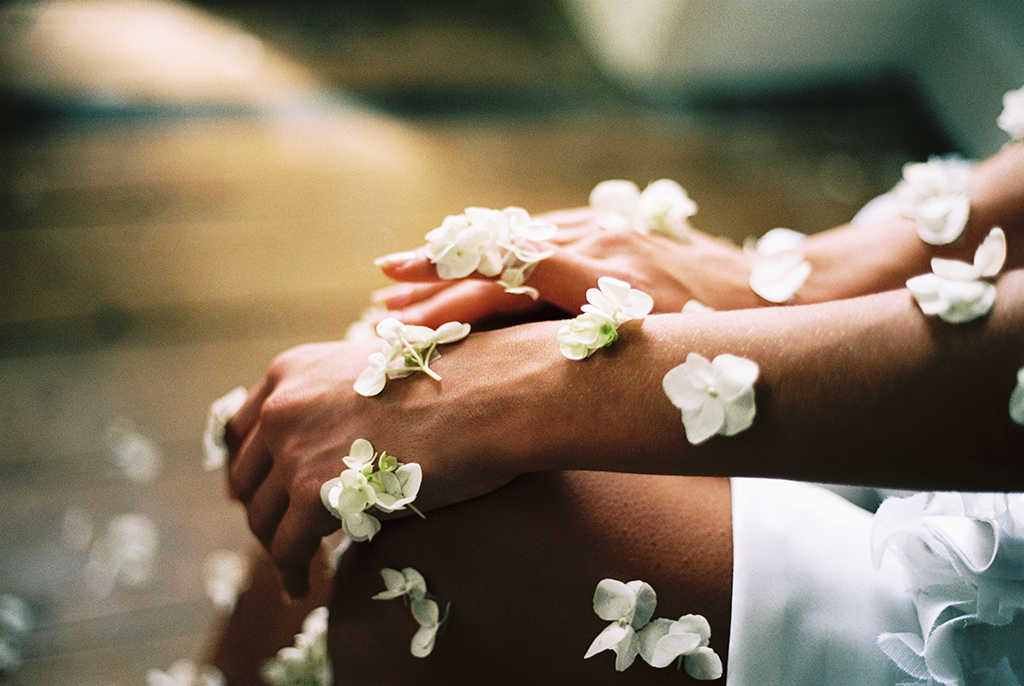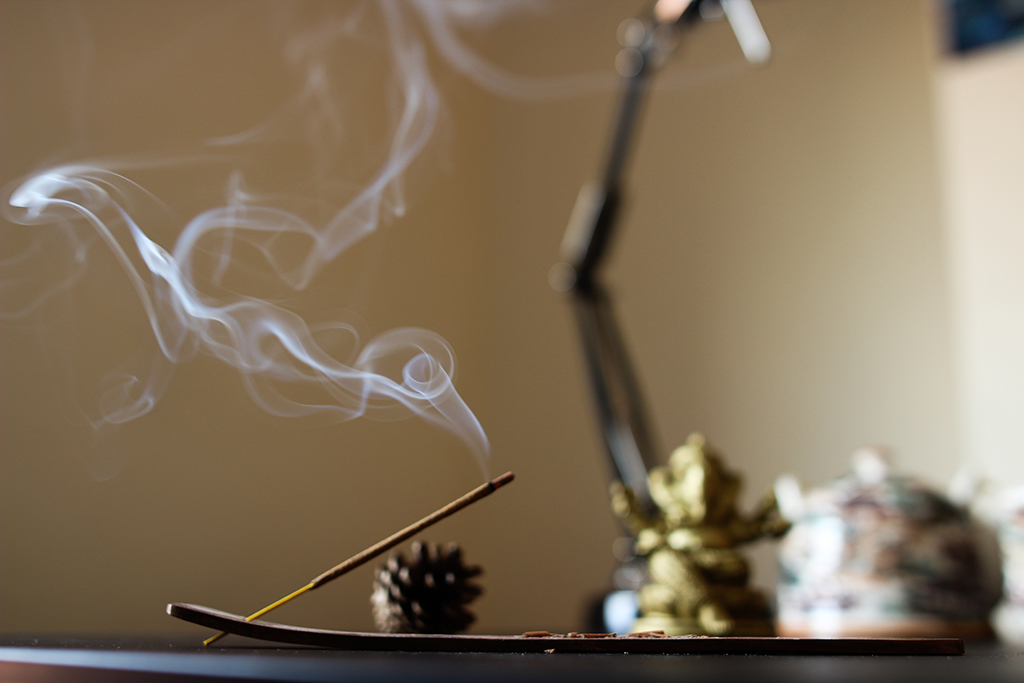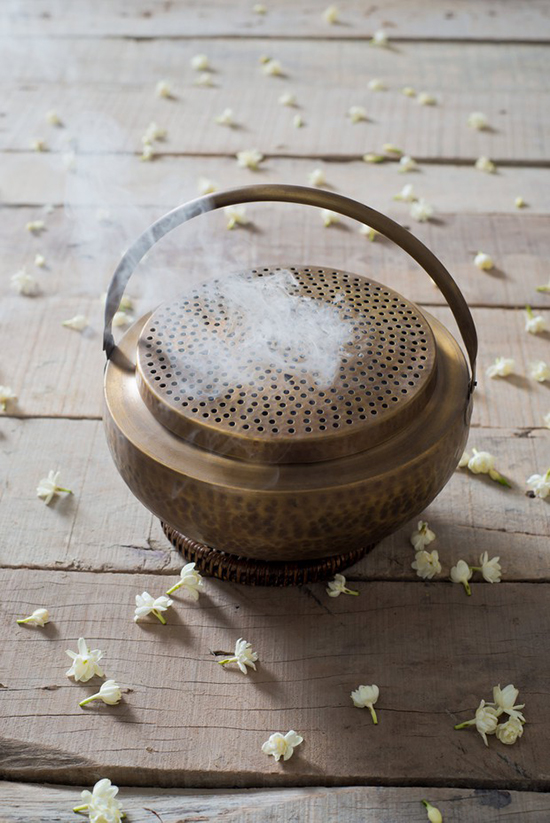



Incense seems to be one of the oldest fragrant rituals across cultures. Joss sticks, traditional Indian dhoops, modern-day incense cones… the format may vary but the effect is always rooted in the powerful impact a fragrance can have on our senses

To be immersed in a scent world, even temporarily, is to shift your consciousness and to awaken to the moment more fully.
The word Incense is derived from the Latin word ‘incensum’ meaning ‘that which is burnt’ and refers to biotic substances made from flowers, resins, gum, herbs, spices, etc., often combined with essential oils, which release fragrance when they are burned. There are two types of incense – combustible and non-combustible.
The traditional Indian dhoop, which is available as a soft roll from which small chunks are broken off and shaped into a cone for use, is perhaps one of the oldest combustible incense. The two other types are incense cone and joss or incense sticks. All three usually contain charcoal or potassium nitrate as the binding agent to hold the ingredients together and to allow the incense to have a self-sustained ember, which burns over a period of time. However, with the environmental effect of combustible incense coming into question, many producers have started using natural plant-based binders such as Makko, Jigit, Laha, etc.
Non-combustible incense is loose aromatic material or a combination of materials such as wood chips, gum, resin, herbs, etc., that do not have combustible material such as charcoal in them and thus require a separate heat source. They must be burnt directly in a fire or over hot charcoal and cannot hold an ember over a period of time. In India this non-combustible material, commonly known as masala, was sprinkled over hot charcoal in dhunas. These were used in daily rituals which did both, make the house fragrant and ward off insects such as mosquitoes. Typically, a dhuna was used at dawn and dusk and taken around the whole house.
One of the oldest written references to incense is found in the Vedas. The Rigveda discusses the spiritual importance of burning incense during religious ceremonies, such as yajnas. Ayurveda, the traditional system of medicine derived from the Vedas, also discusses the use of certain incense fragrances to treat physical and mental ailments. Archaeological evidence shows the use of incense burners as early as the Indus Valley civilization.
Burning incense is not unique to the subcontinent’s traditions. It has been a part of rituals and traditions across the world. In ancient Egyptian tradition incense was burnt thrice a day as an offering to the Sun God Ra. In China, during the reign of Song dynasty (960-1279), there were special buildings made to host only incense burning ceremonies. In Japan it is a tradition, still in practice, to name and pass down large pieces of the precious Aloeswood, a fragrant dark resinous wood used in incense, as family heirlooms. Some of these pieces of Aloeswood are fifteen hundred years old! In the indigenous communities of Latin America incense was burnt and in its patterns of smoke, omens were read and interpreted. The indigenous Native Americans practice smudging – a ceremony of burning herbs or dried plants, typically sage or cedar, tied together in a bundle. Smudging was a part of spiritual ceremonies because it helps ward off negative energy and is believed to help ground and heal the body and mind.

Burning incense is not unique to the subcontinent’s traditions. It has been a part of rituals and traditions across the world. In ancient Egyptian tradition incense was burnt thrice a day as an offering to the Sun God Ra. In China, during the reign of Song dynasty (960-1279), there were special buildings made to host only incense burning ceremonies.
Good Earth's Dewa DhunaIt has been believed across different cultures, religions and regions that the aroma of incense carries within it a potent tool to experience serenity, spiritual quietude and perhaps a higher consciousness. But the use of incense is not limited to the spiritual alone. In our everyday life the fragrance of incense can help us calm our minds, relax, and feel invigorated.
Out of our five senses, smell is one of the most powerful. Because when we inhale a fragrance the scent is processed by and impacts most powerfully our brain’s limbic system, which deals with our emotions, memories and imagination. A single whiff can inspire us or transport us.
Aromatherapists believe in using natural, aromatic essential oils to improve physical and mental wellbeing. And they often also use organic incense to treat ailments. For example, the smell of Frankincense is used to soothe the mind and the nervous system, thereby easing restlessness; Lavender’s fragrance can help temper mood swings and help achieve restful sleep; and inhaling the woody, sweet fragrance of Sandalwood can have a calming impact on the senses.
In a recent study a dhoop consisting only of the ingredients without the addition of any combustible material – charcoal or potassium nitrate – was burnt to study its impact. The ingredients used were cow dung, cow milk, ghee, anantmula (Hemidesmus indicus), guggul (Commiphora mukul), camphor and kapurkachri (Hedychium spicatum). It turns out that burning this dhoop helped cleanse the immediate environment; it worked as a disinfectant and also released a pleasant smell.
But perhaps the most underrated benefit of incense is its impact on sensual pleasures. The Kamasutra stresses on the importance of fragrance when making love. There are many fragrances that work as aphrodisiacs and also help set a certain mood. For example, the sweet scent of Jasmine is seen as a source of sexual exhilaration for both men and women; the fragrance of Rose helps calm and relax the body and mind; and the scent of Ylang Ylang helps increase the libido.
In the subcontinent incense has been used across households during many daily rituals, especially the religious. But fragrant incense can enhance our daily lives in many other ways too. It can be used as an aid to meditation; certain herbs and fragrances can calm the mind and the nervous system, allowing for a better meditation practice. Incense can be used to unwind and destress after a long, tiring day. It can add to a sensual mood. Certain fragrance blends are good for use in the morning because they are uplifting. But above all of these incense can offer the simple yet profound delight of a fragrant house.